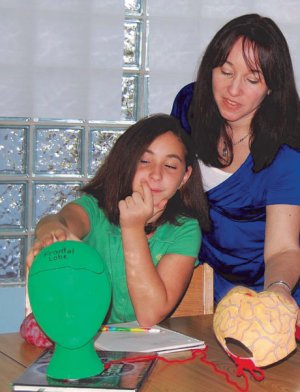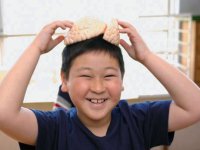Engaging Brains: How to Enhance Learning by Teaching Kids About Neuroplasticity
Your content has been saved!
Go to My Saved Content.Explicitly teaching students about neuroplasticity can have a transformative impact in the classroom. A central facet of our work as teacher educators is teaching about how the brain changes during learning. Many teachers have told us that these findings have had a positive effect on their expectations for their students and on students' perceptions of their own abilities.
Lessons on discoveries that learning changes the structure and function of the brain can engage students, especially when combined with explicit instruction on the use of cognitive and metacognitive strategies that guide them to learn how to learn (Wilson & Conyers, 2013). Using these strategies effectively produces learning gains, which motivate students to take charge of their learning, which leads to further academic success and may have the additional benefit of alleviating classroom management issues. When students see this process as changing their own brains, the result is a powerful and positive cycle.
The force behind this cycle is students' belief that they can get smarter through study and practice, which enhances their commitment to persist in the hard work that learning sometimes requires. Nisbett (2009) reports on classroom research involving seventh graders who were taught that learning changes the brain and that intelligence is expandable. Students in this experimental group did better on math tests than peers who did not receive that instruction.
The same dynamic of persisting to succeed applies to teaching. Keeping the idea of brain plasticity at the forefront of your professional practice offers a constant reminder than when students struggle with lessons, it isn't because they can't learn, but because they need more practice and instructional support.
Strategies for Engagement
Lessons and activities about the power of brain plasticity can take many forms for students of all ages, as the following examples demonstrate.
License to Drive
Remind students that they "drive" their own brains, and teach them useful learning strategies. Second grade teacher Donna Garland leads her students in daily exercises to practice cognitive and metacognitive strategies that they can use in learning all their core subjects. Students' desks are decorated with colorful "brain car" cartoons as reminders that they are in charge of their learning.
Going BIG
Make these lessons a BIG deal. Nichole Galinkin designed a literature-based cognitive skills program she calls "Brains In Gear (BIG): Big Secrets for Thinking and Learning" for the K-3 students in her exceptional education classes. Children explore picture books that reinforce thinking skills, engage in role playing, and talk to teachers, aides and volunteers about how they benefit from thinking about their thinking.
"What I enjoy most of all is listening to the kids as they remind themselves of a catch phrase or a strategy and hearing them share those strategies with others," Ms. Galinkin says. "It's great to actually see them using the information they're learning."

Practice, Practice, Practice
Have a ready answer to the question, "Why do we practice so much?" For example, here's a great story about neuroscientists investigating how learning affects the brain. Medical researchers were fascinated with how veteran cab drivers could navigate the busy streets of London so effortlessly and remember all the shortcuts without consulting a map. So they did brain scans and discovered that the cabbies' hippocampal areas, the part of the brain associated with spatial reasoning, were larger than those of other adults. All those years of driving and remembering routes had literally changed their brains. Studies of musicians have found similar results of the impact of practice, practice and more practice.
Room to Improve
Encourage older students to make the most of their brain plasticity, too. By the time high school students make it to Jeremy Green’s AP psychology and U.S. history classes, some seem convinced that their academic shortcomings are innate and permanent. They are resigned to "making do" in their struggles with reading high-level texts, the most common problem Mr. Green encounters among his students.
With the goal of dispelling the misconception that "you're stuck where you are," Mr. Green begins the school year by sharing a presentation titled "Your Brain Is Amazing." He reinforces that message throughout the school year by teaching cognitive strategies alongside core content, such as explicit instruction on the organizational skills that students will need to complete a research project, and tricks for puzzling out the meaning of unfamiliar terms. The same message applies to the football players he coaches: "You're either going to get worse or better, but nobody's going to stay the same."
"Our role as teachers and coaches is to sell them on the idea that they can get better. If we improve, we win -- period," Mr. Green adds. "We talk about this on the first day of class -- how you're not just what you are today, and that hard work really matters."
How do you engage your students in learning how to learn?
Notes
Hinton, C., Fischer, K. W., & Glennon, C. Students at the Center: Mind, Brain, and Education [Executive Summary], March 2012.
Nisbett, R. Intelligence and How to Get It: Why Schools and Cultures Count. New York, NY: Norton, 2009.
Wilson, D. L., & Conyers, M. A. Five Big Ideas for Effective Teaching: Connecting Mind, Brain, and Education Research to Classroom Practice. New York, NY: Teachers College Press, 2013.
